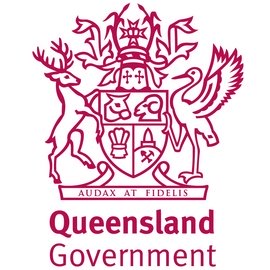Australian teenagers scored in the top four countries in the world for creative thinking skills in the first ever PISA assessment of this kind. The performance of girls was a particular standout.
On the face of it, the results are one of the few good news stories we see in education. Researchers like Dr Sally Larsen and Professor Nicole Mockler have drawn attention to what they see as the deficit narrative of education reporting.
Meanwhile, pundits on LinkedIn have been wondering why there's been a silence on Australia’s successes.
I don’t want to credit mainstream media or the average policymaker with too much pedagogical knowledge, but it’s possible that the reason for the radio silence is that these tests of creativity are inherently flawed.
Not only that, because of the abounding misconceptions of creativity, it’s highly unlikely that the average Australian teacher (or school or system) can take much credit.
Let me unpack the issues one by one, starting with the most fundamental: creativity is not a transferable or teachable skill.
Cognitive scientist John Sweller explains that the generate and test model is a function of our evolutionary biology and can’t be taught.
Think of a child trying to solve the problem of building a tower out of blocks, where they experiment with approaches and adjust as they go along.
What teachers can do is impart vast swathes of knowledge, belonging to specific domains, that students can then use to come up with original solutions to subject-specific problems.
These problems have a clear use-case and purpose. In the world of work, creativity can arise from what’s called T-shaped knowledge, where workers have deep domain knowledge but enough general knowledge to be able to collaborate with other disciplines.
The second issue is the design of the test itself. Greg Ashman rightly points out that some items on the 2022 test had a distinct literary leaning, which goes some way to explain why girls may have performed more strongly.
In addition, PISA has a funny conception of what constitutes a domain, categorising the tasks as written expression, visual expression, social problem solving and scientific problem solving, with only the final category suggesting that knowledge might be advantageous.
Oddly, they acknowledge the research into creativity as domain specific, but not to be deterred, the test consists of “everyday tasks that do not require technical knowledge or skills in order to maximise the role of prior experience as a significant driver of performance".
These comments reflect a “21st century” concern with skills, seen as separate to knowledge rather than embedded in content.
For argument’s sake, let’s imagine that teachers have been doing a fantastic job of teaching discrete creative thinking skills and deserve a pat on the back. What exactly are teachers teaching that is not embedded in content?
Professor John Sweller comments, “When I’m faced with somebody who says ‘I want to teach students creative thinking,’ my first question is, ‘What creativity skills have you learned that you wanted to pass on, which ones do you use?' I normally get complete silence on that. There’s simply nothing there".
Do we deserve credit for something that can’t be taught?
I recently saw a brilliant example of what might be the only effective way of teaching creativity. The lesson was TAS, where Year 8 students were being taught how to thread a needle, and some basic stitches – essential procedural knowledge.
They were taught explicitly and in lock-step. No child left behind with a tangle of knots. The end-product was an adorable and very creative Sean Tan-inspired felt monster. But not without a few foundational skills, guardrails and creative constraints.
If teachers deserve a cheer for their teaching of creative skills, then creativity must be a proxy for knowledge.
This is where the PISA data story falls apart. All other subjects have been in decline.
It seems the best way we can bolster all results is to continue plying our craft in the ways that are supported by cognitive science – which, by the way, includes creative problem-solving.
But only when students have developed expertise, and not before.















